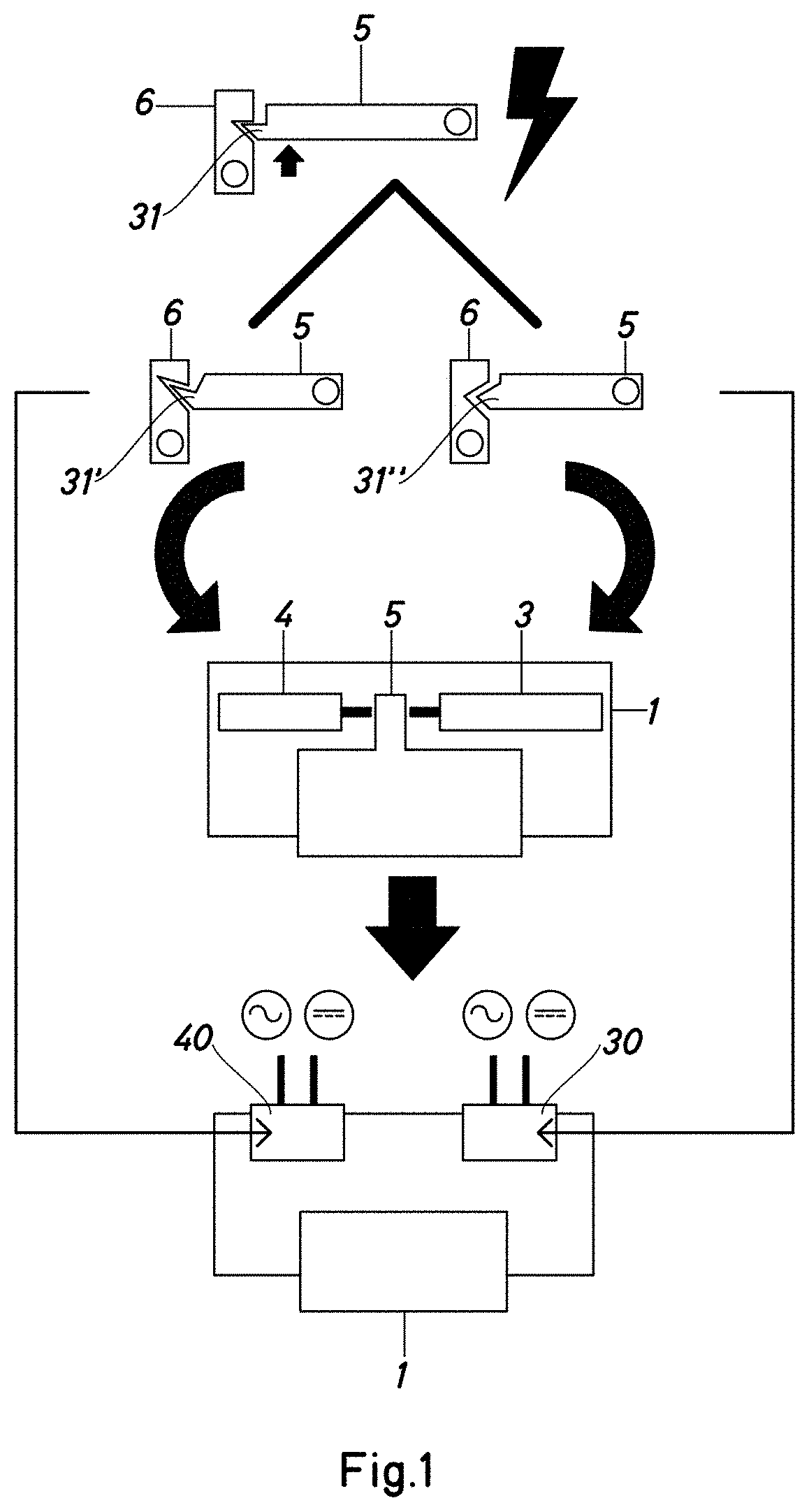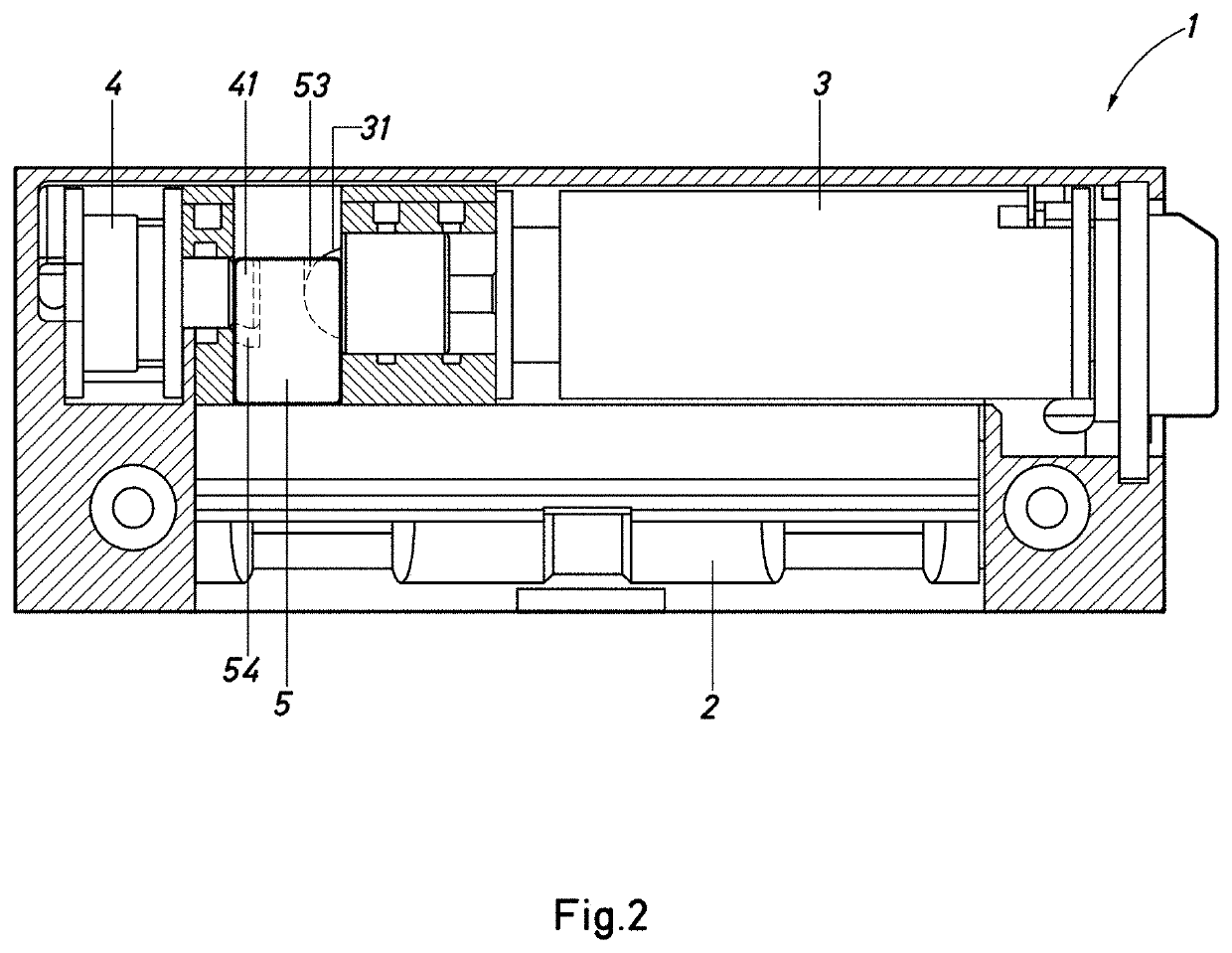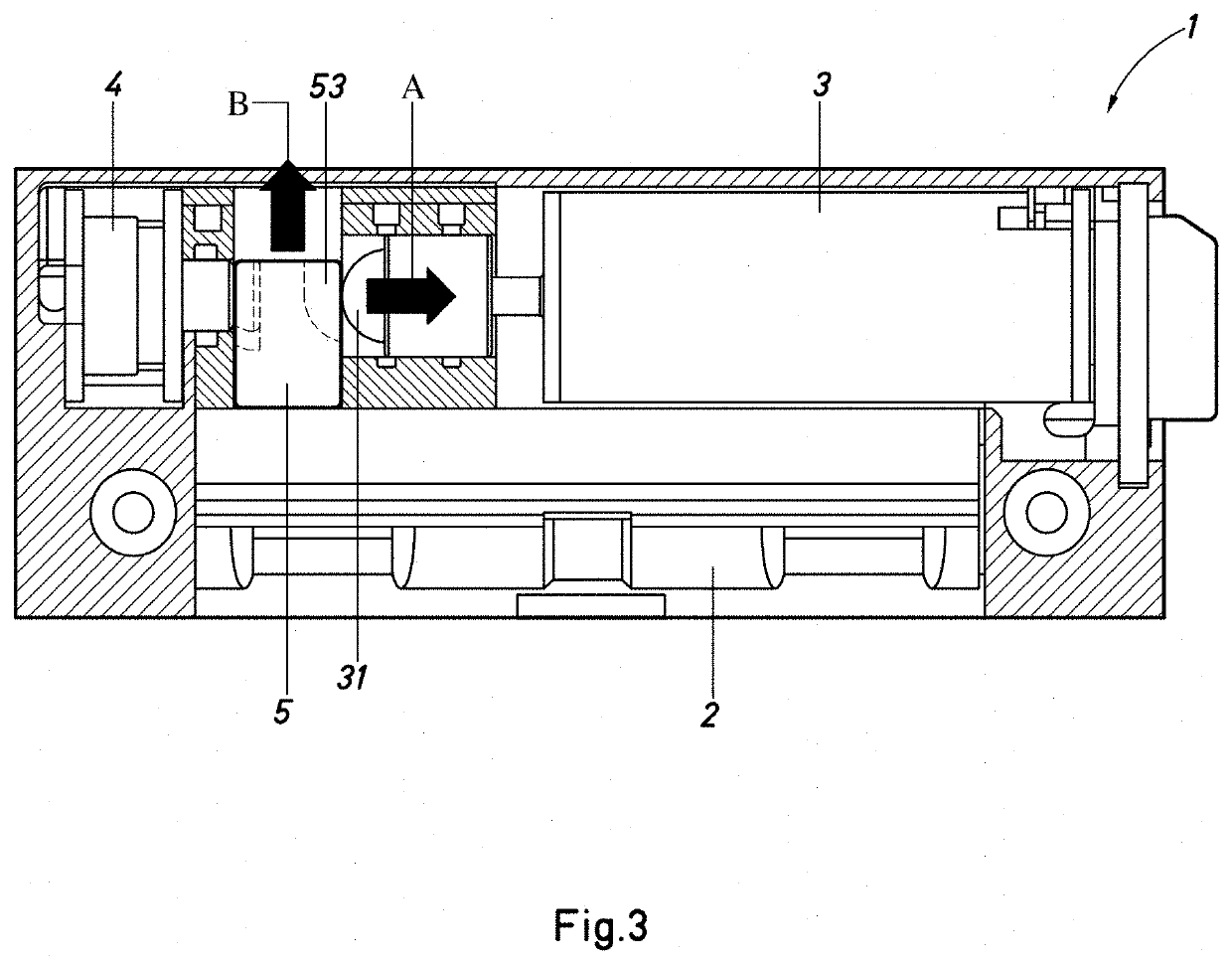Lock device
a technology of locking device and lock body, which is applied in the direction of non-mechanical control, building locks, construction, etc., can solve the problems of inefficiency of long-term systems, and achieve the effect of saving space and more spa
- Summary
- Abstract
- Description
- Claims
- Application Information
AI Technical Summary
Benefits of technology
Problems solved by technology
Method used
Image
Examples
Embodiment Construction
[0077]The upper portion of FIG. 1 shows a known type of central bar or part -5-, the retention force of which must be overcome by a bolt for opening to be possible. To prevent the device from opening, the position of the central part -5- is locked by means of an actuator -6-. In some embodiments of the opening device, the actuator -6- is known as a locking lever or short bar. Locking is achieved by means of a projection, end or part -31- of the actuator which is inserted in a corresponding housing receptacle in the central part -6-, being thus interlocked. Typically, this type of device has a single actuator, the function of which, when it receives an opening order, is to unmesh the central part -5- by retracting the bar of the actuator -6-.
[0078]Depending on the shape of the part -31- and of the corresponding housing receptacle, it may be easier or more difficult to force unlocking by an action transmitted through the central part itself (for example, an unauthorised opening attemp...
PUM
 Login to View More
Login to View More Abstract
Description
Claims
Application Information
 Login to View More
Login to View More - R&D
- Intellectual Property
- Life Sciences
- Materials
- Tech Scout
- Unparalleled Data Quality
- Higher Quality Content
- 60% Fewer Hallucinations
Browse by: Latest US Patents, China's latest patents, Technical Efficacy Thesaurus, Application Domain, Technology Topic, Popular Technical Reports.
© 2025 PatSnap. All rights reserved.Legal|Privacy policy|Modern Slavery Act Transparency Statement|Sitemap|About US| Contact US: help@patsnap.com



